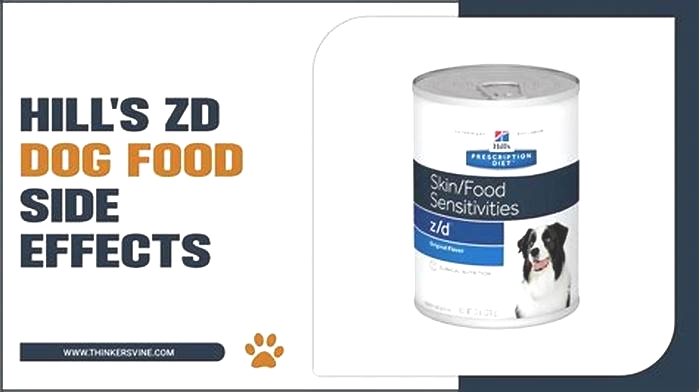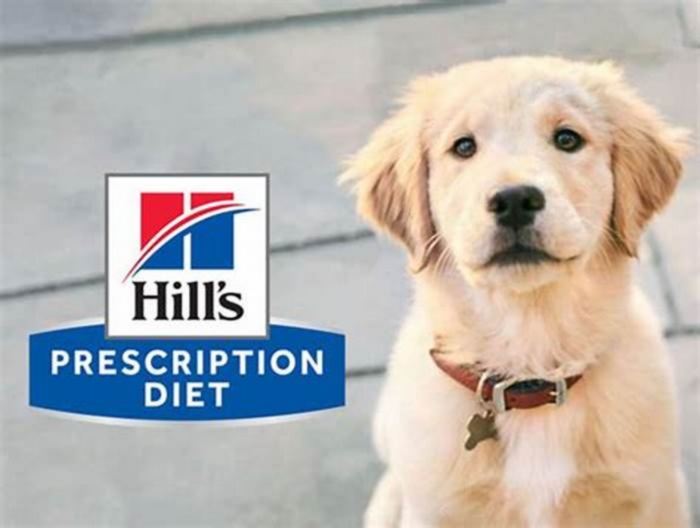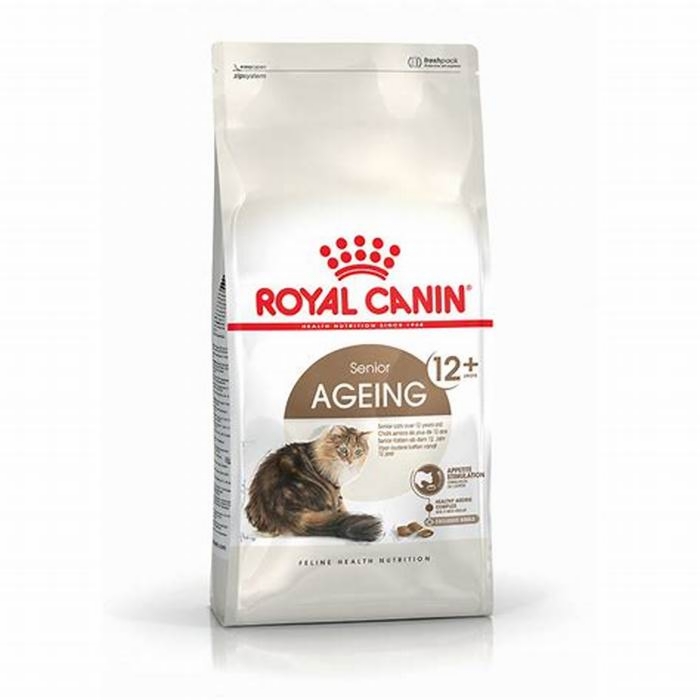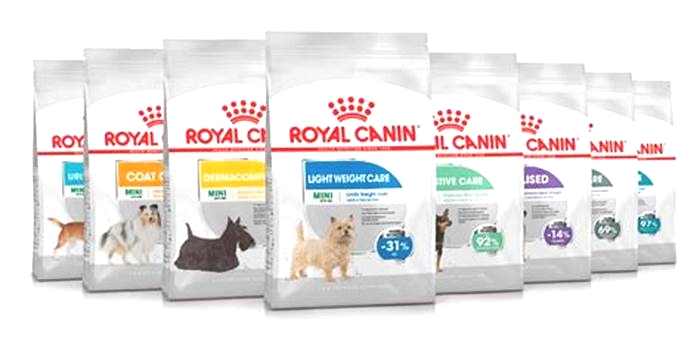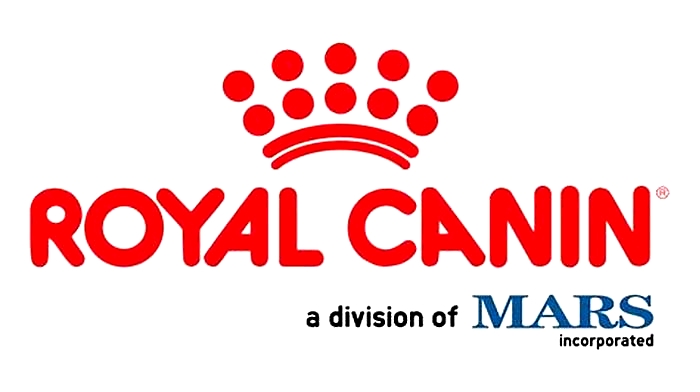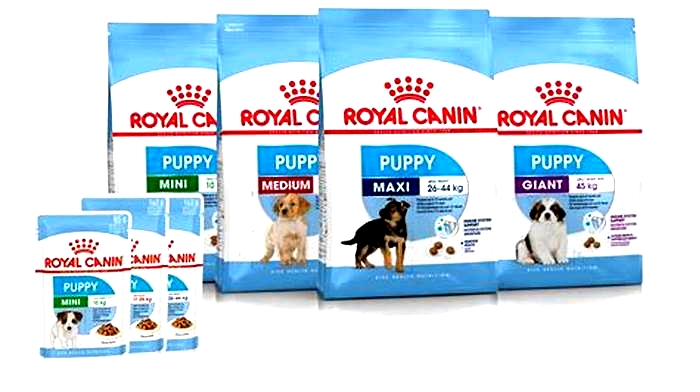Does Royal Canin have side effects
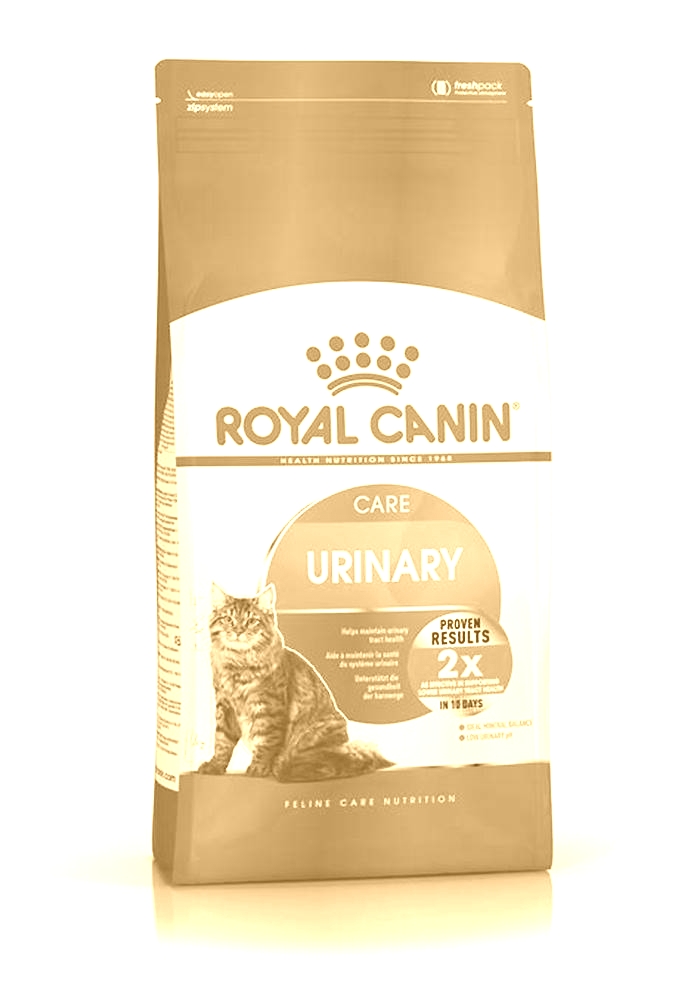
Royal Canin Side Effects
Royal Canin makes both dry and canned pet food for dogs and cats. Its products include diets for all stages of a pet's life, breed-specific diets plus more than 50 veterinary prescription diets. A cornerstone of the Royal Canin philosophy is that there is no one food that suits all pets, and indeed, some of its foods can be unsuitable for some and have negative side effects.
Puppies and Kittens
Several of the Royal Canin prescription diets, including weight loss, skin support and hepatic (liver disease) diets are not suitable for puppies or kittens. They don't contain the right amounts of calcium and other minerals for proper bone and cartilage development, and may be too low in protein to allow healthy overall growth. Side effects could include weight loss or lack of weight gain and joint abnormalities in adult animals.
Lactating and Pregnancy
Pregnant or lactating (nursing) dogs and cats have increased requirements for fat and protein, and incorrect levels of calcium in the diet can cause a potentially fatal condition called eclampsia, according to Drs. Foster and Smith.
Medication Contraindications
Some of the Royal Canin prescription foods cannot be fed if the pet is on certain medications. For instance, the Urinary Health prescription diet cannot be fed if a dog is taking urinary acidifiers. Additionally, some of the foods themselves may have side effects--the Urinary Health diet can make a dog need to urinate more frequently, so it might have accidents in the house.
Allergies and Intolerances
Dogs and cats can have an intolerance or allergy to any one of many ingredients in any food, including Royal Canin. Your veterinarian can prescribe a low-allergen, limited-ingredient prescription food for your pet. This is not a sure-fire cure, however. The hypoallergenic diet for cats contains soy protein isolate, which some cats are allergic to.
Recalls
The Food and Drug Administration (FDA) lists 973 withdrawals or recalls of both consumer and veterinary Royal Canin products as of January 2010. Most are Class 1 recalls, meaning that there is a "reasonable probability" that use of the food can cause serious health problems or death. Note that this represents an extremely small fraction of the Royal Canin products sold and used throughout the world.
References
Photo Credits
Writer Bio
Stevie Donald has been an online writer since 2004, producing articles for numerous websites and magazines. Her writing chops include three books on dog care and training, one of which won a prestigious national award in 2003. Donald has also been a painting contractor since 1979, painting interiors and exteriors.
The Side Effects of Royal Canin Urinary SO Cat Food
Hello, Feline Friends and Guardians!
Navigating the ocean of cat food options can be like trying to solve a Rubiks Cube blindfoldedcomplicated, right? Today, were zooming in on a specific lighthouse in this vast sea: Royal Canin Urinary SO Cat Food. Whether youre a seasoned cat parent or new to the game, understanding the food youre feeding your furry friend is crucial.
The Purr-fect Chart: Understanding the Effects at a Glance
| Effect | Description |
|---|---|
| Hydration Boost | Increases water intake, promoting a healthier urinary tract. |
| Weight Watch | Some cats may experience weight gain due to decreased activity or overfeeding. |
| Palatability | High palatability, but picky eaters might turn their noses up. |
| Digestive Adjust | A change in diet can lead to temporary digestive issues like diarrhea or constipation. |
| Allergy Alert | Rare, but some cats might develop allergic reactions to specific ingredients. |
| Cost Consideration | Higher price point, but investing in urinary health can save on vet bills in the long run. |
The Whisker-Twitching Details
1. Hydration Station: The Key to Urinary Health
Royal Canin Urinary SO is designed to increase your cats water consumption. This is a big win for their urinary tract, helping to prevent the dreaded crystals and blockages that can cause so much trouble. Think of it as a built-in water fountain for your cats health.
2. The Scale Doesnt Lie: Managing Weight
An unintended side effect can be weight gain. Its not the food acting out of spite, but perhaps a reminder to keep an eye on portion sizes and encourage your furball to stay active. Remember, a healthy cat is a happy cat.
3. The Gourmet Critic: Taste Test
While Royal Canin Urinary SO is generally a hit in the feline culinary scene, some cats might be the food critics of the animal kingdom. If your cat gives it the cold shoulder, patience and gradual introduction are key.
4. The Tummy Turbulence: Digestive Changes
Switching foods can upset your cats digestive system temporarily. If your kittys tummy is in turmoil, its usually a short-lived drama. However, persistent issues warrant a vet visit. Always transition foods slowly to mitigate this.
5. Allergy Watch: Itchy and Scratchy
Allergies are the plot twist no one wants. If your cat starts reenacting scenes from The Itchy & Scratchy Show, it might be allergic to something in the food. Vet consultation is paramount here.
6. The Price of Purr-fection: Budgeting for Health
Yes, this specialized diet might have your wallet feeling a little lighter, but consider it an investment in your cats urinary and overall health. Preventative care is often cheaper than emergency visits to the vet.
Wrapping It Up: The Tail End of Our Journey
There you have it, dear cat aficionados! The scoop on Royal Canin Urinary SO and its potential side effects, served with a side of emojis for easy digestion. Remember, every cat is a unique creature with its own tastes and health needs. Consulting with your vet before making any diet changes is always the best course of action.
We hope this guide lights up your path in the quest for your cats health and happiness. Stay curious, stay informed, and heres to many joyful purrs and headbutts from your feline companion!
Until next time, keep those whiskers twitching and those tails high!
The Insider Scoop: Unveiling the Truth About Royal Canin Urinary SO Cat Food
Interviewer: Welcome, Dr. Whiskerson! Were all ears to learn about Royal Canin Urinary SO. What makes it a go-to for cats with urinary issues?
Dr. Whiskerson: Thank you for having me! Royal Canin Urinary SO is meticulously formulated to tackle urinary health issues in cats. Its magic lies in its ability to create a urinary environment less favorable for the formation of struvite and calcium oxalate crystals. Its like equipping cats with their very own, internal superhero cape, fighting off villains that threaten their urinary tract health.
Interviewer: Intriguing! Can you shed some light on how hydration plays into this?
Dr. Whiskerson: Absolutely. Imagine your cats urinary tract as a serene river. When water flows abundantly, it sweeps away debris, keeping everything clean and functioning. Royal Canin Urinary SO encourages this river to flow more robustly, enhancing hydration and diluting urine, which naturally helps prevent crystal and stone formation. Its a cornerstone of urinary health, acting like natures own cleansing system.
Interviewer: With the emphasis on health, are there any drawbacks to be mindful of when feeding this diet?
Dr. Whiskerson: Like any specialized diet, its about balance. While its excellent for urinary health, its crucial to monitor weight and overall well-being. Every cat reacts differently; some might find the taste less appealing, or in rare cases, experience digestive sensitivities initially. Its about observing and adaptingknowing your cats normal behavior and bathroom habits can provide early cues to any adjustments needed.
Interviewer: Speaking of adjustments, how should cat owners transition their pets to Royal Canin Urinary SO?
Dr. Whiskerson: Transitioning should be a slow dance, not a sudden leap. Start by mixing a small amount of Royal Canin Urinary SO with their current food, gradually increasing the proportion over 7-10 days. This gentle introduction allows the cats digestive system to adapt without distress, making the transition as smooth as a cats coat.
Interviewer: Theres a buzz around allergies and food sensitivities. How can owners navigate this?
Dr. Whiskerson: Vigilance is key. Just as humans have varied dietary tolerances, so do cats. If you notice any signs of discomfort, itching, or unusual behavior, its critical to consult with a veterinarian. They can pinpoint the issue, whether its an allergy or sensitivity, and guide you toward a solution that ensures your cats diet is both safe and satisfying.
Interviewer: Lastly, the price point can be a concern for some. How do you address that?
Dr. Whiskerson: Think of it as investing in your cats health portfolio. While the initial cost might be higher, youre potentially reducing future expenses related to urinary tract issues, which can be significant. Plus, the peace of mind knowing youre providing a diet tailored to support their urinary health is priceless. Its about long-term gains over short-term costs.
Interviewer: Dr. Whiskerson, your insights have been incredibly enlightening! Its clear that while Royal Canin Urinary SO can be a game-changer for many cats, a tailored approach, mindful observation, and a partnership with a trusted vet are essential. Thank you for shedding light on this topic!
Dr. Whiskerson: My pleasure! Remember, every cat is unique, and their health journey should be as personalized as their quirks and purrs. Heres to happy, healthy cats everywhere!
HELP US PUT FOOD ON THE TABLE
Royal Canin Cat Food Review
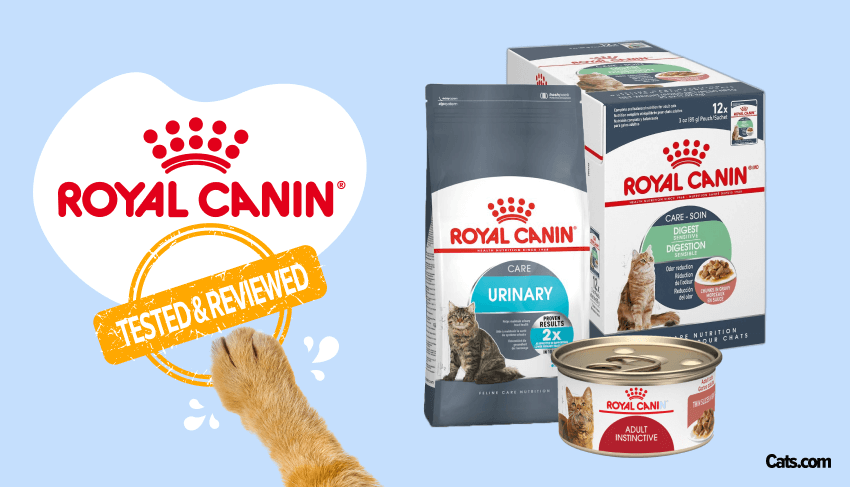
Weve taken a close look at Royal Canin and graded it according to the Cats.com standard, evaluating the brand on species-appropriateness, product variety, price, ingredient quality, customer experience, and recall history.
Overall, we give Royal Canin a C grade.
It receives high marks for product variety, and some of its veterinary diets have a reputation for treating specific health conditions, but for regular feeding, you could find much more carnivore-appropriate foods at a lower price.
The Cats.com StandardRating Royal Canin on What Matters
Weve rated the brand on six key criteria for quality.
Ratings
- Species-Appropriateness 6/10
- Ingredient Quality 5/10
- Product Variety 8/10
- Price 6/10
- Customer Experience 8/10
- Recall History 5/10
Overall Score: 6.3/10
In total, we give Royal Canin cat food a 6.3/10 rating or a C grade.
Royal Canin Cat Food Explained
About Royal Canin
The story of Royal Canin starts all the way back in the 1960s with a veterinary surgeon named Jean Cathary. At the time, Cathary was operating a veterinary practice in Aimargues, a village in the Gard region of southern France.
Troubled by the scourge of skin and coat conditions in local pets, Cathary started experimenting with homemade foods as a nutritional solution. After trying out several recipes and baking them in an oven in his garage, Cathary found that a cereal-based recipe consistently helped alleviate the skin and coat issues plaguing the villages animals.
It was such a success that Cathary trademarked the food Royal Canin and shuttered his veterinary practice. It was time to go into the pet food business.
The newly branded Royal Canin imported an extruder from the United States and quickly became one of Europes pioneering pet food companies. They were the first manufacturer of dry pet food in France and the first European company to use an extruder.
In 1972, the brand was sold to the Guyomarch Group and immediately blasted through Europe, with subsidiaries popping up in Italy, Belgium, Sweden, Spain, Germany, and Denmark. After almost three decades of expansion, a bank buyout, and time on the Paris stock exchange, the company was sold to Mars, Incorporated in July of 2001.
Today, Royal Canin is a global company with distribution and production facilities all over the world, though its worldwide headquarters are still in Aimargues, France. This brand is easily one of the most commonly recommended brands by veterinarians for both general use and veterinary issues.
Sourcing and Manufacturing
Royal Canin sources ingredients from around the world and doesnt release information about countries of origin or specific suppliers. Their products are manufactured in company-owned manufacturing facilities dotting the globe. Royal Canin factory locations include the United States, Canada, Brazil, France, Russia, China, South Africa, Argentina, Poland, and the UK.
All of these manufacturing facilities are owned by Mars, Incorporated. Royal Canin also owns several research facilities located around the world where they employ full-time veterinary nutritionists to assist in the formulation of their foods.
Recall History
Royal Canin has been recalled three times over the past 15 years or so.
The most recent recall took place in 2007 when the company announced a voluntary recall of eight Sensible Choice dry dog foods and seven Kasco dry dog and cat food products.
The recall was issued when Royal Canin learned that their foods contained trace amounts of a melamine derivative from tainted rice protein concentrate. Earlier that year, they recalled several other products due to melamine contamination, including Veterinary Diet feline hypoallergenic.
In 2006, the company issued a recall of several cat and dog food products due to excess levels of vitamin D3. This recall affected products that were sold exclusively by veterinary practices and resulted from reports of numerous dogs and cats becoming ill after consuming the product.
What Kinds of Cat Food Does Royal Canin Offer?
Royal Canin currently sells over 100 different varieties of cat food. While they do offer traditional cat food recipes, many of their products are formulated for specific health issues like urinary tract health or digestive care. Royal Canin is also one of a few cat food brands that offers recipes marketed for specific cat breeds like Persians and Maine Coons.
Royal Canin offers a number of recipes that are formulated, or at least marketed, for specific life stages, body sizes, as well lifestyles as well. Their foods are available in both wet and dry types. In terms of their wet foods, there are a number of different textures and consistencies to choose from.
Across the Royal Canin lineup, there is a common theme: nutrients over ingredients. They dont provide a lot of information about where their ingredients are sourced, but Royal Canin does formulate and manufacture all of their own products.
Royal Canin Cat Food Top 3 Recipes Review
All nutritional information in this table and hereafter is taken from the manufacturers guaranteed analysis. Exact nutritional percentages are not available.
All calculated values are determined using these minimum and maximum published values and may differ from actual values. Royal Canin is the ultimate authority on their products, so please contact the company for more nutritional information.
What Do Customers Think of Royal Canin Cat Food?
Royal Canin is one of the worlds most popular and most well-respected pet food brands. Along with Hills Pet Nutrition, Royal Canin is the food most often recommended by veterinarians. Some say that Royal Canin veterinary diets save lives.
Generally, customers like Royal Canin, and their cats like it, too. Royal Canin doesnt get a lot of negative reviews.
That said, a number of customers have recently reported that their cats became sick after eating Royal Canins Urinary SO recipe.
With no formal investigation and Royal Canin remaining adamant that theres nothing wrong with the food, its hard to gauge the legitimacy of these complaints. That said, we do feel a responsibility to cover the issue. These reports appear on Consumer Affairs and have reached the comment section of this article, making them particularly hard to ignore.
So, what do the reports say?
Most complaints involve cats experiencing digestive distressvomiting, diarrhea, and sometimes lethargy and other symptomsafter eating the Royal Canin formula.
For example, Lia of Lachine, Quebec wrote on Consumer Affairs that two of their cats became sick after eating Royal Canins Urinary SO formula. A week after their first cat fell ill, Lisa says that our other cat begins to vomit and have diarrhea after eating his food. Both cats were lethargic, vomiting and overall, not doing very well. After spending over $4000 bringing our cats in to try and figure out what was going on, we realized it must be from their food.
Lias conclusion wasnt confirmed by a vet or laboratoryagain, all of this remains purely speculativebut their experience seems to align with that of other reviewers on Consumer Affairs.
Kat of Cornwall, Ontario said that her cat was vomiting the RC food every time I fed him after feeding him the food for about 2 months which worried me.
While some reports come from new Royal Canin customers, others are long-time Royal Canin buyers whove noticed a change.
Lori of Leominster, Massachusetts wrote on January 27th, 2020 that My 12 to (sic) cat has been on Royal Canin urinary SO since he was 4. The past year he has been sick after eating it and now he wont eat the wet food at all from most recent case purchased. I dont know what to do.
While some claim that these issues coincided with a formula change around January of 2020, similar complaints date back to early 2019. Although these reports are unsettling and worth paying attention to, we havent been able to find any confirmation that Royal Canins Urinary SO food is making cats sick. Again, thousands of people feed their cats Royal Canin without complaint and the majority of customer reviews are positive on Chewy and other retail sites.
Overall, these reports are inconclusive and dont provide any compelling evidence against the safety of Royal Canin cat food.
Royal Canin performs routine testing of their products and has not identified any quality or safety issues. Given the companys history of quality control, theres no reason to believe that theres any reason for concern.
While it doesnt appear that theres any significant health risk, we advise caution and will continue to monitor the situation.
To get an idea of what customers are saying about Royal Canin, here are a few reviews selected from several popular recipes listed on Amazon and Chewy.
Positive Reviews
My vet prescribed this food for my Lucas after he was diagnosed with stones in his urinary track and was very sick. He has been eating this food since and has his issue has been under control. Food is expensive but worth it. Fmc008, reviewing Royal Canin Urinary SO Moderate Calorie
The switch to this food was nothing short of amazing. Sure, my geriatric cat did not suddenly turn into a kitten, but shes no longer needing eye drops for the glaucoma, supplements for the arthritis, and her urine output is much reduced (better kidney function). We also have a 2 year old cat that also eats the same food. He LOVES it, too. A win all around. L.A.H, reviewing Royal Canin Feline Nutrition Indoor Cat Food
Negative Reviews
I am absolutely shocked that this food is supposedly manufactured by a veterinarian. I would never take my cats to the person that designed this dry food. I bought the food since my cat is having urinary tract problems only to see that the food only has 6% crude protein and that the rest is pure filler and not even grain free filler but filled with Corn, Corn Meal and rice. So basically, this food will take the urinary crystals out of the cats pee but will provide the cat nutrition to the equivalent of a bag of Doritos. Cats CAN NOT DIGEST CORN; a cat eating corn is like a human being eating cardboard so why would a veterinary health formula be made of such garbage. Going to get my money back. Alexandra Lebron, reviewing Royal Canin Urinary SO Moderate Calorie
Gave it two stars because my vet confirmed this was a great brand for cats and my guy loved it but it seemed to give him indigestion or gas. He threw up way more than I was comfortable with on this. I took him to the vet in a panic and had x-rays and bloodwork done only to find out he was perfectly healthy. As soon as I changed his food the problems went away. Amazon Customer, reviewing Royal Canin Indoor Adult Dry Cat Food
How Much Does Royal Canin Cat Food Cost?
Your expenses will vary depending which type of Royal Canin food you purchase. In general, however, Royal Canin foods are a bit pricier than others with similar ingredient lists.
For example, Royal Canins popular Urinary SO dry cat food costs about $0.30 per ounce, adding up to a daily feeding cost of around $0.60 per day for an average cat. That places it on the lower end of the premium price spectrum.
The wet version of the same recipeRoyal Canin Veterinary Diet Urinary SO Loaf in Saucecosts $0.40 per ounce and would cost about $3.60 per day if feeding a 10-lb cat.
Moving away from prescription diets, Royal Canins Adult Instinctive Thin Slices in Gravy recipe is, oddly, more expensive than some of the recipes in the Veterinary Diet Line. At over $0.50 per ounce, this food would cost about $4.50 each day if feeding a typical cat.
Why Is Royal Canin Cat Food So Expensive?
Many Royal Canin foods are considerably higher-priced than other products with similar ingredient lists. After decades as one of the two brands that are recommended most often by veterinarians, Royal Canin has a reputation that justifies its price.
Its one of the few brands that offer condition-specific products, which makes Royal Canin easy to recommend to frustrated patients and has earned it a place in veterinarian offices around the world. This lends the brand status and respect that goes beyond the veterinary line.
Overall, Is Royal Canin a Good Choice?
Some people think that humans dont fully understand how whole foods nourish the body. Its impossible to break down food into macronutrients and micronutrients and assume that a synthetic reproduction and reassembly of those components will have the same benefits as the natural composition of a freshly killed rabbit.
Another school of thought believes that foods are no more than the sum of the parts that humans understand. They are bundles of amino acids, fats, starches, minerals, trace metals. They can be broken down and recreated under controlled conditions. According to this thought system, an ingredient list isnt where you get the important information about food. The nutrient analysis is what matters.
Royal Canin appeals to those in the second category, saying that we need to focus on the nutrients our pets need for optimal health, not on the ingredients.
So, lets ignore the fact that Royal Canin foods contain bogeyman ingredients like corn gluten meal, wheat gluten, and cornmeal. Lets focus on the nutrients instead. Royal Canin foods still arent ideal nutrition for most cats, who are metabolically adapted for higher metabolism of proteins and lower utilization of starches.
When other foods dont provide the results you need, Royal Canin foods may be able to help your cat feel better. For general nutrition, however, Royal Canin cat food is overpriced and under-nourishing.
Royal Canin may be able to help sick cats, but it floods their bodies with carbohydrate-heavy plants, low-value proteins, and increases their chances of developing the chronic problems that necessitate Royal Canins big-ticket prescription diets. Too much plant protein may contribute to kidney disease. Dry diets may increase a cats chance of developing lower urinary tract disease.
In a Royal Canin world, developing these illnesses means that its time to switch to another specially formulated prescription diet. In reality, a simple meat-based, hydrating diet might have prevented the problems in the first place.
Where Is Royal Canin Cat Food Sold?
Royal Canin cat food is widely distributed in pet specialty retailers and veterinary hospitals around the world. Use Royal Canins store finder to find a retail location near you. You can also purchase it online through retailers like Chewy and Amazon.
Click here to shop for Royal Canin cat food on Chewy


